

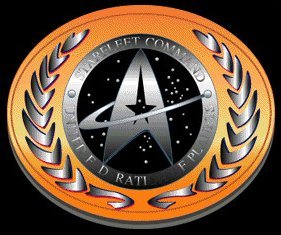
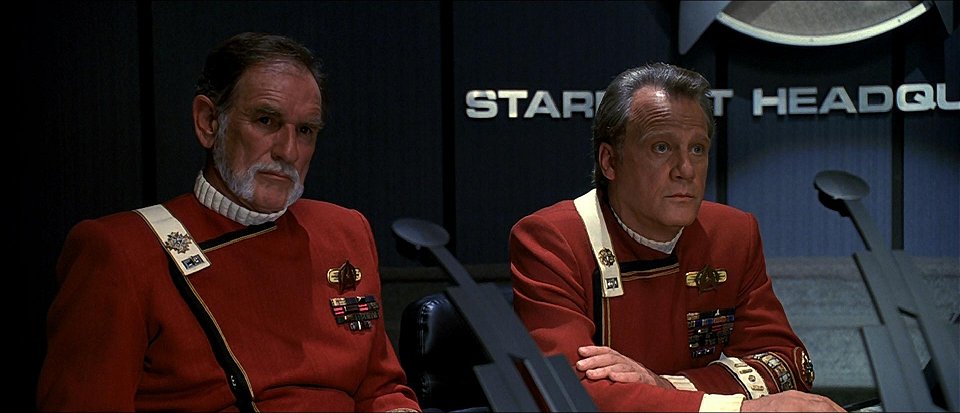 Starfleet: The exploratory, colonial, humanitarian and peace-keeping arm of the United Federation of Planets. These are the deep space explorers, the discoverers, the diplomats, the samaritans, the pioneers, scouts, the builders of colonies and starbases as well as their watchdogs and protectors. They know when to be involved with other nations and, more importantly, when not to.
Starfleet: The exploratory, colonial, humanitarian and peace-keeping arm of the United Federation of Planets. These are the deep space explorers, the discoverers, the diplomats, the samaritans, the pioneers, scouts, the builders of colonies and starbases as well as their watchdogs and protectors. They know when to be involved with other nations and, more importantly, when not to.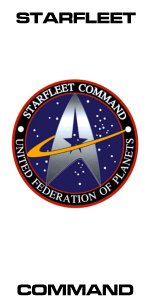
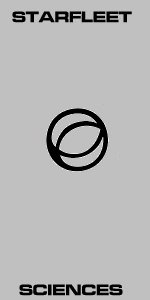
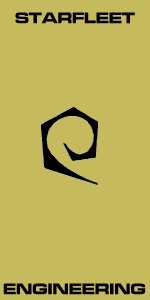

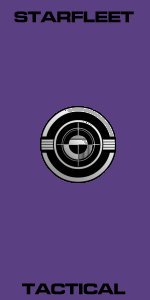
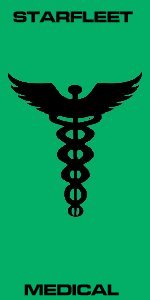
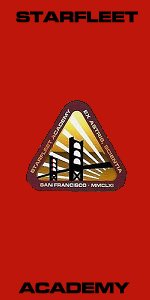
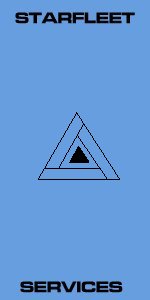

| Fleet number | Active starships | Starbases included | Flagship | Neighbourhood | Author notes |
| First Fleet | 822 | 1, 9, 18, 36, 84 | U.S.S. Enterprise NCC-1701-B | Home fleet. Klingon and Romulan borders | First forces assembled to fight the Romulan War. The original role-model United States First Fleet was disbanded in 1973 and its duties assumed by the Third Fleet. This may explain why the Third Fleet in Star Trek defended Earth - mirroring the USN 3rd Fleet. Tactical elements include: |
| Second Fleet | 847 | 12, 16, 20, 22, 29, 42, 56, 73, 77, 105 | U.S.S. Hood NCC-2541 | Klingon and Romulan borders also the Holy Order of the Kinshaya and the Metar in the Tabula Rasa sector. | Rimward central portion of the Federation. Home-based in Starbase 12, this fleet was originally formed to face the Klingons. This fleet used to cover all of the Federation region along the Klingon border, however this was divided with the Seventh and Ninth fleets. The Second Fleet also faced up to the Metar. Facing the Klingons and the new government of Chancellor Kaarg. Hood NCC-2541 is part of this fleet, as is brand new Graf Zeppelin NCC-14881 soon to be joined in 2313 by Victorious NCC-14957. The Second Fleet is facing up to two realities: a new Klingon Chancellor with a resurgent Empire that the Second, Seventh and Ninth Fleets are monitoring the increased Klingon fleet activities. Also for the Second Fleet is the discovery of the Taubat in our space. The possibility of Metar on the loose is too terrible to contemplate. Ships of the Second Fleet include: |
| Third Fleet | 827 | 4, 8, 10, 19, 23, 25, 28, 33, 61 | U.S.S. Renown NCC-2545 | Romulan and Kzinti Patriarchy | Northern coreward section of the Federation. Formed to fight the Kzintis and keep the First Fleet free. This fleet covers Delta, Aaamazzara, Izar and Sauria. The Third Fleet is based at Starbase 10. It is the principal coreward fleet of the Starfleet. Tracing its heritage back to the signing of the Coalition of Planets' charter in 2154, the Third Fleet was stood up to face the rising Romulan threat. The following year in 2155, the incident with the Kzinti and the NX-01 Enterprise cemented the decision that a dedicated coreward fleet would protect the Coalition on that side. The Third Fleet featured prominently in the Romulan War and was the fleet that maintained the defences of the Neutral Zone after hostilities ceased. Over the last decade, tensions with the Romulans brought the fleet strength back up to war footing. Along with the First Fleet, the Third Fleet prepared to face the Romulans and their new Type A Warbirds. The Tomed Incident brought the conflict to an abrupt halt in the middle of 2311. Eighteen months after Tomed and the Romulan withdrawal, Starfleet is still weary of the Romulans returning in force. Starfleet Intelligence has concentrated assets of the Antares, Endurance, Phantom and Kestrel class ships to the Neutral Zone border to monitor the Romulan activity on their side of the order carefully. The Federation Council has also supported the Federation President in passing a motion to upgrade the monitoring stations along the Romulan Neutral Zone. Kzinti and Romulan stories. The Kzinti border patrol and events post-Tomed. The withdrawal of Romulan diplomats from the Federation over 2312 back to Nimbus III as a neutral point before returning to Romulan space. U.S.S. Renown NCC-2545 and brand new U.S.S. Tecumseh NCC-14924 assigned to this fleet. The Nimrod mission is covertly heading to find the Borg. Tactical elements include: |
| Fourth Fleet | 835 | 35, 51, 55, 92, 117 | U.S.S. Columbia NCC-2002 | Tholians and Caitians | Mid-Rimward region of Alpha Quadrant. Protects the Caitian and Pacifica systems up to Grazer. The Fourth Fleet is based on Cait and is one of the 23rd Century expansionist fleets, along with the Fifth, Sixth and Seventh. The Taurus Reach campaign of the 2260s saw the rapid multiplication of fleet size as Starfleet Command looked to counter both the Klingon and Tholian presence in this region. The loss of the U.S.S. Bombay, Defiant, NCC-1764 and Starbase 47 'Vanguard', was a heavy blow but one that the Fourth Fleet built up from. Tholians. The 2312 re-visiting of this enigmatic alien race from Future Tense, The Tholian Web and the Vanguard novels. The region of space has ‘thin’ boundaries between dimensions including the mirror universe. Starfleet studies the very nature of subspace here. U.S.S. Adventure page covers this. Antares class Oxford and Endurance class Barnwell are in the region too. Starbase 117 is under construction and the Mughi class Hitomi and Jupp class Osterhaus and Reeves are both assigned. NCC-2002 U.S.S. Columbia is the flagship of the fleet. Brand new U.S.S. John F Kennedy NCC-14902 has just completed her shakedown and has joined the Fourth Fleet. Brand new U.S.S. Potemkin NCC-18253 is due for shakedown for this fleet in 2313. Renaissance class U.S.S. Shakespeare, Botticelli and Palmieri are currently assigned to this region. The Tholian species runs on being a mystery, so lots of Dr Who-style “I’ll explain later” moments. NO use of the Starfleet Battles/Starfleet Command version of the Tholians here. These are xenophobic Y-class ‘Demon’ world-inhabiting crystalline creatures. Their physical lifespan is short but I surmise they get ‘downloaded’ into new bodies after being uploaded into the Lattice for a time. This lends the Tholians a truly alien slant on the concepts of life and death. Tholian space is as unusual as they are, with a high number of Y-class planets and the subspace barriers in the region are ‘thin’; perhaps the two aspects are linked. The ST: Star Charts book suggests there are good relations with the Tholians since the 2270s but with the Vanguard revelations of short life-spans and reviewing borders etc, I’d say that relations ‘fluctuate’. Tholia. I’d almost like to visualise this world as Hell with a totally alien concept of cities or living regions. Vanguard: Harbinger says it has three continents. Lost Era: The Sundered says it’s N class, but I disagree and say Y Class. As for diplomatic relations, I’m lost as to how the Federation could send a representative to a world hostile to all carbon life-forms. The cross-dimensional nature of Tholian existence is also something fun to consider and write. A very ‘not us’ concept of existence. We know from the Enterprise two-parter that the mirror universe Tholians used a distress signal to lure the Defiant into their dimension. The Tholians in our prime universe must also be from that dimension, perhaps coming here as a result of their experience with the Defiant? The Tholians were mentioned by Klaang in ENT: Broken Bow. Perhaps Tholians are of a composition similar to volcanic glass in appearance etc: Volcanic glass. ENT: In A Mirror, Darkly also featured the Tholians with an energy-dampening weapon. Something refreshingly different from the usual disruptors and torpedoes. Tactical elements include: |
| Fifth Fleet | 825 | 2, 11, 32, 41, 43, 53, 58, 63, 129, 133 | U.S.S. Farragut NCC-14221 | Cardassian Union, Tzenkethi Coalition and Talarian Republic | Established to control the border region around the newly discovered Cardassian Union, Tzenkethi Coalition and Talarian Republic borders. This is a diplomacy-driven Fleet based on Trill, wanting to make a good first impression. The mission to Ab-Tzenth in 2312 with the Farragut, ended in failure. Tensions in the region have risen following the loss of former flagship U.S.S. Excelsior NCC-2000 near the Tzenkethi border. Fleet Admiral Margaret Sinclair-Alexander authorised the securing if the Federation-Tzenkethi border with additional tactical elements, whilst intelligence-gathering assets would work with the diplomatic corp, to identify the reasons for the failure of the first diplomatic initiative and be better prepared for the second. A sub-division from the old Fourth Fleet. 14221 Farragut with McCoy and Ambassador Spock go to the Tzenkethi for failed first contact attempt at relations in 2312. Javelin page deals with this in part. Question whether to lose Excelsior destruction or not (from the novel 'One Constant Star'). Brand new Excelsior class U.S.S. America NCC-18297 is on shakedown in 2313, this replaces the Levant variant that was lost. Renaissance class Donatello, Solario and Clouet are assigned to this fleet. The Fifth Fleet is purpose designed to address the Tzenkethi and Talarian borders that have recently increased in importance. Tactical elements include: |
| Sixth Fleet | 810 | 44 | U.S.S. Discovery NCC-14771 | Unexplored space on the rimward edge of the United Federation of Planets | Rimward reaches of Alpha and Beta Quadrants. This protects and controls the region near Betelgeuse. The Sixth Fleet, sometimes referred to as the 'Southern Fleet' covers the region operating furthest rimward of the Federation. The fleet operates with a Lexington command cruisers for the Fleet Admiral: the U.S.S. Blue Ridge.
The frontier fleet heading South. U.S.S. Investigator story and Rattlesnake are all part of this along with Blue Ridge command ship, Lexington class and brand new Excelsior class Discovery NCC-14771. Potential story of studying wrecked Genesis planet and the remains of the Mutara Nebula. I suspect Regula One was destroyed in the Genesis detonation. U.S.S. Bulwark NCC-6213 attached to this fleet. Renaissance class Ushakov, Pannonius and Castanheda are allocated to this fleet. With a lack of starbases constructed in this direction, Jupp class Escorts are found in number here. The latest Hermes variant, Pillinger class, is also found here in strength for scouting missions. Fleet headquarters are at Starbase 44 and amongst the tactical assets are the Ark Royal class Pegasus and the dreadnought Arkansas. Tactical elements include: |
| Seventh Fleet | 812 | 4, 5, 7, 13, 24, 49, 113 | U.S.S. Lexington NCC-14427 | Klingon Empire | As established by Tales of the Seventh Fleet and the U.S.S. Justice team. Starbase 7 is the fleet headquarters. Works with the Second and Ninth Fleets regarding the Klingon Empire. In DS9 they lost 98 of 112 ships, which were later replaced; this gave the first indication of the vast size of a fleet, although the 112 ships would be mostly the tactical elements and discounting those unserviceable. Tactical elements include: |
| Eighth Fleet | 844 | 27, 34, 64 | U.S.S. Fearless NCC-14598 | Gorn Hegemony. | Newly-formed fleet that is specifically designed to address the crescent of nations on the underbelly of the Klingon Empire. Based around the region from Bellatrix, Regula, Cestus and Ceti Alpha driftward. Divided off from the Seventh Fleet. This region has increased in importance. Starfleet Command is concerned at the de-stabilising of the Klingon Empire and the political ripples this is sending across the Beta Quadrant. Intelligence assets including Endurance, Kestrel and Phantom class ships have been directed to monitor the revolution. Starfleet Command is currently liaising with the Eighth Fleet to provide a peace-keeping force, if necessary, to secure the border from being compromised by either side. The political ramifications of such a move are imense, so a diplomatic effort is underway in ernest. Tactical elements include: |
| Ninth Fleet | 845 | 6, 15, 36, 52, 105, 114, 123 | U.S.S. Albion NCC-6212 | Syr'Ypt'Q Kingdom | New fleet that came from the forward-deployed element of the second fleet. This fleet covers the driftward arm of the Federation on the far side of Klingon space. Tactical elements include: |
| Reserve Fleet | 305 | Spaceport Arthur | U.S.S. Federation NCC-2100 | Spread across inner Federation | Reserve fleet consists of tactical classes mothballed between conflicts and decommissioned starships awaiting scrapping. Classes include: Saladin, Hermes, Constitution, Federation, Menahga, Phobos, early series Akula and Okinawa and Maguellanes. |
A cross between NASA, ESA, Russian Space Agency, the US Coastguard, the British Antarctic Survey, HMS Protector and Endurance and the Hydrographic elements of the Royal Navy: Echo, Enterprise, Magpie and Scott; Starfleet is the exploratory, diplomatic, colonial and defensive arm of the Federation. Star Trek, and therefore Starfleet, is NOT "Hornblower in space"; that analogy is purely to inspire Summer blockbuster movies. Star Trek is about James Cook and the Endeavour, Adventure and Resolution, about Charles Darwin on the Beagle, Robert Falcon Scott on the Discovery, Ernest Shackleton on the Nimrod, the astronauts and cosmonauts who have gone up in rockets, shuttles and space stations. The primary mission of Starfleet is to seek out new life, new civilisations and planets to colonise. With the ever-expanding population of the United Federation of Planets comes a need for planets to live on plus resources to power and feed the people. Exploration serves the purpose of gaining new knowledge, new friends and also surveying for the following colony ships.
Based in San Francisco on Earth, Starfleet has a fleet of over 8000 starships spread over nine fleets, which in turn are sub-divided into task groups and those which operate on a solo basis attached to those fleets. All of the information from these starship and starbases are relayed live back to Starfleet Headquarters, real-time where possible, and added to the Memory Alpha library of knowledge for the Federation. Think of it like pin-head sized objects scattered around a football stadium, palace, shopping mall or other large building site; you may have 8000 ships but they are scattered across the immense void of space. In addition, over one hundred starbases extend the supply and communication lines across the Federation, enabling starships to conduct their deep space missions. A fleet of Starfleet Auxiliary vessels supplement these starbases, allowing starships to journey far beyond the borders of the Federation. These starships are on a primary mission to seek out new life; mostly this life is single-celled biological organisms but occasionally it is complex carbon or silicon-based life. Starfleet has a scientific element that are ready to address the cultural and linguistic challenges of a first contact scenario aboard most starships. Probes usually paved the way for manned starship expeditions but occasionally an alien starship will cross our way unexpectedly. There are biological and chemistry experts onboard along with medical scientists to fathom the workings of the life that is discovered. A deep space explorer will be ready for all eventualities, whereas smaller frigates and science vessels will have a simpler arrangement of specialities.
| Specialist Starship Team | Role Description |
| Team 1: Habitation Seekers | Planetary Scientists, Astronomers, Statisticians, Biologists, Environmental Science - the roles to locate planets, comets, asteroids or other phenomena that might hold the potential for life. |
| Team 2: Life Seekers | Biologists, Botanists, Oceanographers, - the specialists for finding life on planets or other media. Everything from single-celled organisms up to complex animals, plants etc. |
| Team 3: Proto-Intelligence | Biologists, Linguists, Evolutionary and Comparative Psychologists. Once life is found, these assess the potential intellectual capacity of that life for intelligence. |
| Team 4: Intelligence, Culture and Civilisation | Psychologists, Sociologists, Political Sciences and Linguists. This team looks at intelligent life with civililisation, cultures, their relationships with each other and life around them. An assessment is made of their relationship with their neighbours, especially when they achieve space-travel. |
| Team 5: First Contact Impact Team | Medical Doctors, Environmental Sciences, Psychologists, Sociologists. This team looks at the possible and probable effects of first contact with the other species. The emphasis is on avoiding contamination, both in a disease sense and cultural sense. A starship needs to go into first contact with eyes wide open; all the numbers run on probabilities and options. |
Starfleet has many component divisions including: Starfleet Operations, Starfleet Medical, Starfleet Corps. of Engineering, Starfleet Security, Starfleet Intelligence and many others. Each element has an admiral in command, as well as their own office - all co-ordinated from Starfleet Headquarters. Starfleet answers to the Federation President and the Federation Council. Leading Starfleet is the Starfleet Commander-in-Chief. The Commander Starfleet - or CinC - liaises with the Federation President and the council. There are nine Fleet Admirals, all in command of their respective fleets. The starbases and space stations scattered across the Federation are commanded by Commodores and Rear Admirals, extending the authority of Starfleet Headquarters to the final frontier. The importance of these lines of communication cannot be overstated; Starfleet is the spearhead of exploration and discovery: decisions are made every day on whether to make contact with other life and their nations or whether, more commonly, to observe them from afar and leave them to develop on their own. Starfleet and the Federation have learned to act responsibly, not to contaminate other cultures with ideas, waste products or technology. To interfere in the affairs of others is to potentially drag Starfleet and the Federation into internal affairs and conflicts which we know nothing about and certainly cannot take sides. The PRIME DIRECTIVE exists for GOOD reason. The scientific elements of Starfleet are honed to precision for this purpose; to be able to study life and other civilisations without making them aware of our presence until the time for making first contact is appropriate - IF IT EVER IS. If the political or cultural values of another nation of life is in conflict with the values of the Federation then, like the Klingons 2154 - 2256, they are consciously left alone and observed from afar until a diplomatic approach can be made, or the insurmountable values of the other nation change favourably.
As an organisation of peaceful exploration and diplomacy, Starfleet rewards academic achievement, diplomatic success and new discoveries. Unlike a military organisation, Starfleet sees the use of force as a failure in diplomacy, the last resort, a most distastful one at that. many members of the Federation have experienced warfare in all of its dreadful forms. None wish to experience it again. For centuries, humans engaged in war to resolve their differences, acquire resources and strike out against those they did not understand or like. Meanwhile the people starved and suffered from terrible diseases as resources were wasted on fighting. It was only after Earth was almost sterilised in the Third World War of the 21st Century that the human race finally realised the futility of war. The unsuccessful diplomatic overtures of Michael Burnham in May 2256 led to a year of conflict with the Klingon Empire in which a fifth of the Federation was occupied and a third of Starfleet was destroyed. After the war was resolved, the Federation and Starfleet had to re-examine the events leading up to the conflict and the timeframe of the war itself; to learn from the mistakes. A failure of diplomatic engagement earlier and underestimation of the Klingon threat was one factor. A failure to follow-up on the Klingon-related missions of NX-01 Enterprise is another. A diplomatic initiative was the first priority. The intelligence-gathering and defensive elements of Starfleet were to be re-examined and enhanced to prevent a repeat. The conflict simmered as a Cold War from 2257 - 2293.
With diplomatic relations with the Klingons fully established after the Khitomer Accords were signed on Stardate 9529, Starfleet began to remodel itself ready for the new century. This was a time to realise the ideals of exploration, scientific discoveries and diplomacy; Starfleet was to reassert the peaceful exploration of space and relegate defence to a last-resort aspect. The Cold War with the Klingons was resolved with diplomacy and words, not with combat. Older starships were retired and new designs were prototyped. Similarly the starbase and space station network across the Federation and the frontier were reviewed to be renewed, improved and their communications facilities enhanced; this was a time to close the net and bring the situational awareness of the Federation to new heights; conficts were to be anticipated and diffused before they developed. New information, from sources such as the El Aurians from the Lakul and from encounters with the Taubat and Metar made Starfleet Headquarters aware of new dangers on a level unseen in the history of the Federation so far. We had to be ready for these perils. Tension with the Romulans soon stalled the process, but with the recent Tomed Incident having 'cleared the air', the major shipyards such as those at San Francisco, Copernicus, Utopia Planitia, Vulcan, Andoria and Starbase 134 are now working in earnest as the review of Starfleet continues. From stembolts to starships - all of Starfleet is changing, to face the new challenges of the new Century.
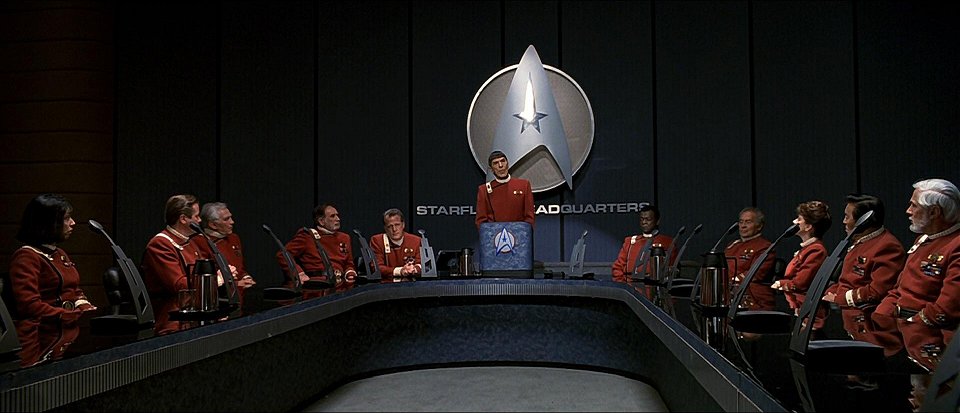
| Starship Type | Designation | Description | Example | Notes |
|---|---|---|---|---|
| 1 | Explorer | Largest Multi-role starships of Starfleet | Excelsior | Typically with type 1 defences |
| 2 | Cruiser | Multi-role starship typically with command funtions | Constellation | typically operate independently, as with Explorers |
| 3 | Escort | Defensive role | Akula | Small Escort designated as Corvettes |
| 4 | Frigate | Small and specialised ships | Okinawa | |
| 5 | Scout | Reconnaisance specialist ships | Oberth | |
| 6 | Transport | Cargo ships | Doppler |
| Type | Description |
| 1 | Full phaser and torpedo arc. |
| 2 | Phasers with photon torpedoes [forward only]. |
| 3 | Phasers only. |







